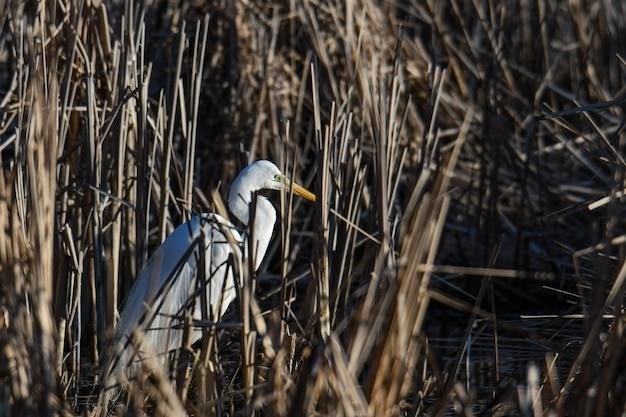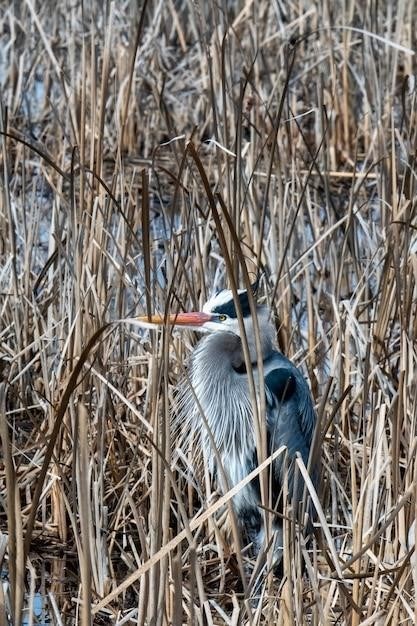
Birds of Alabama Field Guide⁚ A Comprehensive Look
This comprehensive guide explores the diverse avian world of Alabama, from the common backyard birds to the rare and endangered species. Learn about the different types of birds found in the state, including birds of prey, waterfowl, songbirds, and more. This guide also provides insights into birdwatching in Alabama, including the best places to spot birds and essential equipment for a successful birding experience. Discover the conservation efforts in Alabama that protect the state’s bird populations and explore the captivating world of Alabama’s avian inhabitants.
Introduction
Alabama, with its diverse landscapes ranging from coastal plains to the Appalachian foothills, is a haven for birdwatchers. This state boasts a rich avian tapestry, attracting both seasoned birders and casual nature enthusiasts. The “Birds of Alabama Field Guide” serves as an invaluable resource for anyone seeking to delve into the fascinating world of Alabama’s feathered inhabitants. It provides a comprehensive overview of the state’s bird species, offering detailed information on identification, habitat, behavior, and conservation status.
This guide is designed to be user-friendly, catering to individuals of all experience levels. Whether you are a novice birdwatcher just starting to explore the world of avian identification or a seasoned birder seeking to expand your knowledge of Alabama’s unique birdlife, this guide will be an indispensable companion. It features stunning photographs, detailed descriptions, and informative range maps, making it easy to identify and learn about the birds you encounter.
The “Birds of Alabama Field Guide” is not merely a collection of facts and figures; it is a gateway to understanding the intricate web of life that connects birds with their environment. It highlights the importance of bird conservation, emphasizing the role of habitat preservation and sustainable practices in ensuring the continued presence of these remarkable creatures. Through its insightful information and engaging presentation, this guide encourages readers to appreciate the beauty and wonder of Alabama’s birdlife and inspires them to become active participants in their conservation.
Common Birds of Alabama
Alabama’s diverse habitats, from lush forests to sprawling wetlands, support a wide array of bird species. Among them, certain birds stand out as familiar sights in backyards, parks, and natural areas. These common birds provide a glimpse into the rich avian tapestry of the state.
Sparrows, finches, and their allies are among the most commonly observed birds in Alabama backyards. These small, often brightly colored songbirds are a delight to watch as they flit from feeder to feeder, their cheerful chirps adding to the ambiance of nature. The Cedar Waxwing, with its distinctive crest and waxy red tips on its wings, is another common sight in Alabama, particularly during the fall, winter, and early spring months. These gregarious birds travel in large flocks, their presence adding a splash of color to the landscape.
Beyond the backyard, Alabama’s waterways attract a variety of waterfowl, including ducks, geese, and herons. The Great Egret, with its elegant white plumage and long, slender legs, is a majestic sight along the state’s coastal areas and inland lakes. The American Bittern, a master of camouflage, blends seamlessly into its wetland surroundings, making it a challenge to spot, but a rewarding find for keen observers. These common birds, along with many others, contribute to the vibrant avian tapestry of Alabama, offering a glimpse into the state’s diverse and captivating birdlife.
Birds of Prey in Alabama
Alabama’s skies are home to a variety of birds of prey, majestic hunters that play a crucial role in maintaining the ecological balance of the state’s ecosystems. These skilled aerial predators, with their sharp talons and keen eyesight, are a thrilling sight to behold. Among the most recognizable birds of prey in Alabama is the Red-tailed Hawk, its distinctive reddish-brown tail a beacon against the blue sky. This common hawk can be found soaring above open fields, forests, and even urban areas, its piercing gaze scanning the ground for unsuspecting prey.
The Bald Eagle, a national symbol of strength and freedom, has made a remarkable comeback in Alabama thanks to conservation efforts. These majestic birds, with their striking white heads and tails, are a testament to the power of nature’s resilience. While not as common as the Red-tailed Hawk, Bald Eagles can be spotted along the state’s rivers, lakes, and coastal areas, often perched atop tall trees or soaring high above the water in search of fish.
The Northern Harrier, with its distinctive hovering flight and long, narrow wings, is a frequent visitor to Alabama’s grasslands and wetlands. This elegant bird of prey hunts with precision, its keen eyesight allowing it to spot small mammals and rodents from afar. The presence of these birds of prey, from the common Red-tailed Hawk to the majestic Bald Eagle, speaks to the rich biodiversity of Alabama’s ecosystems, showcasing the intricate web of life that thrives within the state’s natural landscapes.
Waterfowl in Alabama
Alabama, with its diverse waterways, including rivers, lakes, and coastal areas, provides a haven for a wide array of waterfowl. These feathered inhabitants, adapted to life on and around water, add a vibrant dimension to the state’s natural landscapes. Among the most prominent waterfowl in Alabama are the ducks, a group that encompasses numerous species, each with its unique characteristics and adaptations. The Wood Duck, with its vibrant plumage of green, blue, and white, is a sight to behold, its presence adding a splash of color to the state’s waterways. These ducks, known for their ability to nest in tree cavities, are often found along wooded streams and swamps, their distinctive calls echoing through the wetlands.
The Mallard, a familiar sight across North America, is also a common resident of Alabama’s lakes and ponds. These ubiquitous ducks, with their distinctive green heads and brown bodies, are often seen in large flocks, their quacking calls filling the air. The Canada Goose, with its distinctive black head and neck and brown body, is a familiar sight in Alabama’s parks and waterways, their honking calls echoing through the air, especially during the fall and winter months.

Alabama’s waterways also provide habitat for a variety of other waterfowl, including the American Coot, a black, chicken-like bird with white bills and lobed toes, often found alongside ducks. These diverse waterfowl, with their varied plumage, calls, and behaviors, contribute to the richness and beauty of Alabama’s aquatic ecosystems, reminding us of the interconnectedness of nature and the importance of conserving these valuable habitats.
Songbirds of Alabama
Alabama’s forests, fields, and wetlands are alive with the melodies of its diverse songbirds. These avian vocalists, with their intricate songs and vibrant plumage, contribute to the state’s rich tapestry of natural soundscapes. Among the most familiar songbirds in Alabama are the cardinals, with their striking red plumage, especially the male, and their melodious whistles. These common backyard visitors are a delight to observe, their vibrant colors adding a splash of life to the landscape. Another prominent songbird is the Northern Mockingbird, known for its impressive vocal repertoire, mimicking the sounds of other birds and even household noises.
Alabama’s forests are also home to a variety of warblers, small, brightly colored songbirds that flit through the canopy, their songs adding a symphony of sound to the woodland. The Yellow-throated Warbler, with its distinctive yellow throat and olive-green back, is a common sight in Alabama’s forests, its song a clear, high-pitched trill. The American Robin, with its iconic orange breast and melodious song, is a familiar sight in Alabama’s lawns and parks, its presence a welcome sign of spring. The Bluebird, with its bright blue back and reddish-brown breast, is another beloved songbird, often seen perched on fence posts or telephone wires, their clear, whistled songs echoing through the air.
These songbirds, with their varied songs, colors, and behaviors, contribute to the beauty and biodiversity of Alabama’s ecosystems, reminding us of the importance of protecting these delicate habitats and ensuring the continued presence of these feathered musicians.
Rare and Endangered Birds in Alabama
While Alabama boasts a diverse avian population, some species face the precarious threat of endangerment, their survival hinging on conservation efforts. The Red-cockaded Woodpecker, with its distinctive black and white plumage and striking red crest, is a prime example. This species, once abundant in the state’s longleaf pine forests, is now listed as endangered, its population dwindling due to habitat loss and fragmentation. The Woodpecker’s unique nesting strategy, excavating cavities in mature pine trees, makes it vulnerable to habitat changes.
Another endangered species is the Golden-cheeked Warbler, a small, vibrantly colored songbird found only in a limited range across central Texas and a tiny sliver of southwest Alabama. This warbler, known for its distinctive golden-yellow cheeks and intricate songs, faces threats from habitat loss, particularly from the conversion of its preferred oak-juniper woodlands to other land uses. The Alabama population is particularly vulnerable, with only a handful of individuals found in the state, highlighting the critical need for conservation efforts.
The Alabama Black Snake, a non-venomous snake, is also facing threats and is listed as a species of concern. Conservation efforts are underway to protect these rare and endangered birds and other wildlife, but the success of these efforts depends on public awareness, responsible land management practices, and continued dedication to preserving Alabama’s natural heritage.
Birdwatching in Alabama
Alabama offers a haven for bird enthusiasts, boasting a diverse array of avian species that grace the state’s varied landscapes. From the rolling hills of the Appalachian Mountains to the coastal plains and the vast expanse of the Gulf Coast, Alabama provides a captivating stage for birdwatching adventures. The state’s diverse habitats, ranging from lush forests and wetlands to open grasslands and coastal areas, attract a wide range of birds, making it a paradise for birdwatchers.
Whether you’re a seasoned birder or a curious beginner, Alabama offers opportunities to spot fascinating avian inhabitants. The state’s numerous parks, wildlife refuges, and nature trails provide ideal settings for birdwatching excursions. For those seeking a more structured experience, guided birdwatching tours are available, offering expert insights and a chance to spot elusive species. The Alabama Birding Trails, a network of designated routes across the state, provide a comprehensive guide to prime birdwatching locations, ensuring a rewarding experience for all levels of bird enthusiasts.
With its abundance of birdlife and breathtaking natural beauty, Alabama is a true gem for birdwatchers, offering a chance to immerse oneself in the vibrant world of avian diversity. From the soaring flight of raptors to the melodious songs of songbirds, Alabama’s birdwatching opportunities are truly captivating.
Best Places to Birdwatch in Alabama
Alabama’s diverse landscapes and rich avian population make it a haven for birdwatchers seeking memorable encounters. The state offers a tapestry of prime birdwatching locations, each with its unique charm and avian specialties. Among the top destinations, the Mobile-Tensaw Delta stands out as a haven for wading birds, with its vast wetlands and intricate waterways attracting a wide array of herons, egrets, and ibises. The delta’s pristine environment provides a sanctuary for these elegant birds, offering spectacular views of their graceful movements and vibrant plumage.
For those seeking the thrill of spotting birds of prey, the Oakmulgee Creek Park in Shelby County is a must-visit. This park, with its mature forests and open fields, attracts a variety of raptors, including red-tailed hawks, Cooper’s hawks, and American kestrels. The park’s scenic trails provide an opportunity to witness these magnificent birds soaring through the sky, their keen eyesight and powerful wings a captivating sight to behold.
The Gulf Coast, with its sandy beaches and coastal marshes, offers a unique birdwatching experience. Here, you can witness the majestic sight of shorebirds, seabirds, and wading birds, all drawn to the rich ecosystem of the coastline. The Gulf State Park in Gulf Shores is a prime spot for observing these coastal birds, with its expansive beaches and diverse habitats providing a haven for avian diversity. Whether you seek the thrill of spotting rare species or the simple pleasure of witnessing the beauty of birds in their natural habitat, Alabama offers a plethora of prime birdwatching locations, each with its own unique charm and avian wonders.
Essential Equipment for Birdwatching
Embarking on a birdwatching adventure in Alabama requires a well-equipped arsenal to enhance your experience. A good pair of binoculars is essential for observing birds from a distance, allowing you to appreciate their intricate details and vibrant plumage. Choose binoculars with a magnification of 8x to 10x and a large objective lens (40mm to 50mm) for optimal clarity and light gathering ability, ensuring clear views even in dim light conditions. A field guide, either in print or digital format, is indispensable for identifying the birds you encounter, providing valuable information on their appearance, habitat, and calls.
A camera, preferably with a telephoto lens or a zoom feature, is crucial for capturing those memorable moments of bird encounters. A tripod or a monopod can provide stability for capturing sharp images, especially when photographing birds in flight. A bird identification app on your smartphone can be a valuable tool, allowing you to identify birds based on their appearance or calls, even without a field guide. Remember to dress comfortably in layers, wear appropriate footwear for the terrain, and pack a hat and sunscreen to protect yourself from the elements. With these essentials in hand, you’ll be well-prepared to embark on a rewarding and enriching birdwatching journey in Alabama.



